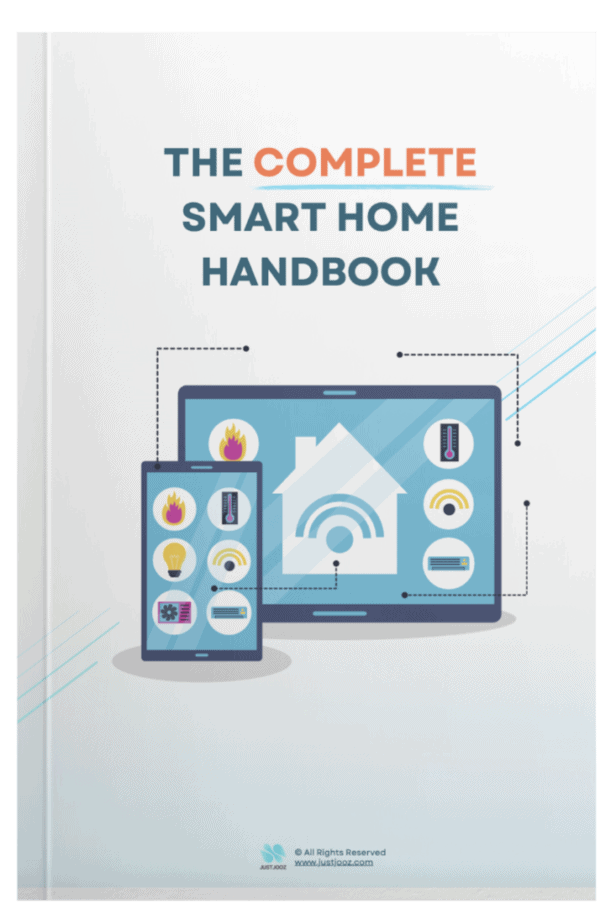How to Custom Build a House: 7 Easy Steps to Get Started!
We’re reader-supported; we may earn a commission from links in this article.
Building a custom home is a dream for many who love to customize their own home.
Having the ability to choose every detail, from the foundation to the rooftop, is an exciting journey filled with endless possibilities.
However, it can also be a complex process that requires careful planning and decision-making.
Here are seven steps that will help guide you through the custom homebuilding process:
Step 1: Set a Budget
Before you start looking for a property or hiring an architect, it is important to know how much money you have to spend on your project.
Step 2: Choose a Location
Deciding where you want to build your custom home is another critical step.
Research various neighborhoods, considering factors like proximity to work, schools, and amenities. Remember, the location can significantly impact the value of your home.
Step 3: Assemble Your Team
This step involves hiring a builder or general contractor, an architect, and possibly an interior designer.
Make sure to research, interview, and check the references of potential team members. The expertise of your team will be invaluable in navigating the custom home building process.
Your team will be your most important asset in this process. Here’s a bit more about who they are and what they do:
The Builder or General Contractor
They are the ones who transform your dream into reality. They oversee the physical construction of the house, manage the subcontractors, and ensure that everything is up to code.
The Architect
An architect will help you lay out your plans for a custom home and provide design ideas. They can also assist with drawing up construction documents and obtaining permits.
The Interior Designer
If desired, an interior designer can help create a cohesive look inside your home. They can provide suggestions on furniture, paint colors, window treatments, and more.
Step 4: Find a Lot
Once you have your team in place and know how much money you have to spend, it’s time to look for a lot. Consider factors like size, topography, zoning laws, and potential views when selecting the perfect spot for your custom home.
Step 5: Create Construction Documents
The architect will provide detailed plans and specifications that the builder will use to construct your custom home. It is important to take the time to review these documents carefully before moving forward with construction.
Step 6: Electrical and Plumbing Work
After the foundation is set and the framing is complete, it’s time to move on to the electrical and plumbing work of your custom home.
Electrical Work
A licensed electrician is essential for this step. They will install wiring for lights, outlets, and appliances according to the blueprint provided by the architect.
They also ensure your home’s electrical system aligns with local safety codes. Decide on the locations for outlets and lights early on, considering the layout and function of each room. Energy-efficient options, such as LED lighting and smart home systems, can also be considered during this phase.
Plumbing Work
Just like the electrical work, a professional plumber is needed for this task. They will install pipes and fixtures in the bathrooms, kitchen, laundry room, and anywhere else where water supply is needed.
This process includes both the supply system, bringing water into the house, and the drainage system, taking water out. Discuss with your plumber about installing energy-efficient fixtures, such as low-flow toilets and showerheads, to save water and reduce utility bills.
Remember, both the electrical and plumbing work are critical stages in the home building process and should be done meticulously to avoid costly repairs in the future.
Step 6: Secure Financing
Many people who build a custom home use a construction loan.
This type of loan covers the cost of labor and materials during construction and is then replaced with a regular mortgage once the house is built.
Construction Loans
Construction loans play a pivotal role when you custom build a house. This type of loan is specifically designed to finance the costs associated with building a home, which typically incurs several large, lump-sum payments to the builder throughout the construction process. The lender often checks the progress of construction before releasing funds.
Unlike standard home loans, construction loans are short-term and have higher interest rates because they carry more risk for the lender. You only pay interest on what you borrow during construction, not the entire loan amount, which can help manage costs during this phase.
Once your home is completed, the construction loan can then be converted into a permanent mortgage. Some lenders offer construction-to-permanent loans, which consolidate the construction loan and mortgage into one loan, simplifying the financing process.
It’s essential to research and compare different loan options to ensure you get the best bang for your buck!
Step 7: Design Your Dream Home
Now comes the fun part: working with your architect and designer to plan out every detail of your dream home. This is where you can let your imagination run wild, but keep in mind the budget you’ve set earlier.
Step 8: Obtain Necessary Permits
Your builder or contractor will guide you through the necessary paperwork required by your city or county to build your custom home. This process can take some time, so be prepared for a bit of waiting.
Step 9: Begin Construction
Now it’s time to finally break ground! During this stage, your builder will be working closely with you to help see your project through to completion.
This phase can be exciting yet stressful, so good communication with your team will be key to managing any hiccups that may occur.
Step 10: Inspect and Move In
After construction is completed, have a final walk-through with your builder to address any minor issues. Once you’re satisfied, it’s time to move into your custom-built home! Remember, building a home is a journey, but with careful planning and the right team, it’s a dream that can certainly be realized.
Step 11: Conducting a Thorough Inspection
After your custom home is built, it’s vital to conduct a thorough inspection to ensure everything is as it should be. You want to make sure that the work is done to code, and the finishes are to the quality you expect.
Getting a Professional Inspection
While you can certainly do a walk-around and check things yourself, it’s highly advisable to bring in a professional home inspector. A professional will have the knowledge and experience to spot issues that you may overlook. They will check the structure, plumbing, electrical systems, HVAC, and more.
What to Look For During the Inspection
Whether you’re inspecting on your own or with a professional, here are a few key things to look for:
- Structural Elements: Check to see if the walls are straight, if the floors are level, and if there are any cracks in the foundation.
- Exterior: Look for any damage to the siding, roof, or windows. Also, inspect the landscaping and drainage.
- Systems: Make sure the HVAC system is working properly, all outlets and switches work, and the water pressure is adequate.
- Finishes: Check the quality of the paint job, the installation of the cabinets and appliances, and the finish of the floors.
Remember, a home inspection is not just about spotting issues. It’s also an opportunity to understand how everything in your new home works.
Have the inspector, or your builder, show you how to operate the systems in your home like the HVAC, water heater, and any smart home features.
Tips for Custom Building Your House
Now that we’ve covered the seven steps to building your custom home, here are some additional tips to ensure a smooth build and end product that aligns with your vision.
Tip 1: Plan for the Future
Think about how your needs might change over time and plan your home accordingly. Designing a home that can adapt to your changing lifestyle could save you considerable cost and effort in the future.
Tip 2: Prioritize Quality Over Quantity
It can be tempting to go big when custom building a house. But remember, it’s more important to invest in high-quality materials and craftsmanship. A smaller, well-built home will bring more long-term value than a larger, poorly constructed one.
Tip 3: Keep Resale Value in Mind
Even if you plan to live in your custom home for many years, it’s wise to consider its potential resale value. Make decisions that will appeal to the broadest market without sacrificing your personal style and needs.
Tip 4: Create a Contingency Fund
Unexpected costs often arise during construction. Include a contingency fund in your budget to cover these surprises and keep your project on track.
Tip 5: Communicate Regularly with Your Team
Maintain open communication with your builder, architect, and designer throughout the process. Regular check-ins can help identify and resolve issues early, ensuring your project stays on schedule and within budget.
The Building Process: What to Expect
Constructing a custom home is a complex task that requires careful coordination of various elements. The process typically kicks off with site preparation, which includes clearing the land, setting up temporary utilities, and preparing for foundation construction. Once your land is ready, the foundation gets laid, and the frame outlining the basic shape of your home is erected.
The next phase involves installing the ‘envelope’ or exterior of your house, which includes the roofing, siding, and windows.
This phase makes your house weatherproof and paves the way for the next stages.
Now, it’s time for the interior work to begin. Electrical wiring, plumbing lines, and HVAC systems are installed in the walls and ceilings. Then comes insulation and drywall, followed by flooring, cabinetry, and appliances.
Throughout this process, numerous inspections are performed to ensure everything adheres to local building codes. It’s a detailed process, and at times, it might feel slow, especially when waiting for inspections or dealing with unexpected delays.
However, you need to have patience!
Remember, building a custom home is not just about the end result but also about the journey. With a positive approach and continuous collaboration with your team, you’ll gradually see your dream home take shape, one brick at a time.
What are Custom Homes?
Custom homes are unique residential properties specifically designed to meet the owner’s particular specifications. Unlike production homes built using pre-designed blueprints, custom homes start from a blank page.
The homeowner actively participates in the design process, making decisions on everything from the floor plan to the type of doorknobs. The result is a one-of-a-kind home that reflects the owner’s tastes, lifestyle, and personality.
Along with an architect and builder, homeowners can ensure that each aspect of their home is carefully planned and executed to achieve the desired result.
Building a custom home is about creating more than just a house—it’s about crafting a personal sanctuary tailored to your unique vision.
Understanding the Role of Custom Home Builders
Custom home builders are the heart of your home building project. They’re responsible for turning architectural plans into the physical structure of your dream home. They manage everything from site preparation and construction to coordinating with subcontractors for specialized work like plumbing, electrical, and HVAC installations.
Custom home builders are more than just construction managers. They act as your advocate throughout the entire process, making sure your interests are represented. They maintain quality control, ensure that the project follows all local building codes and regulations, and strive to deliver your dream home within the agreed time and budget.
One of the most critical roles of a custom home builder is communication. They serve as the primary point of contact throughout the building process, providing regular updates and addressing any concerns you might have. They work closely with architects and designers, ensuring that every detail in your design plan is executed correctly.
When choosing a custom home builder, it’s essential to consider their experience, reputation, and previous work. A builder with a solid track record of building custom homes similar to your style and within your budget range will likely be a good fit. It’s also wise to check references and reviews from past clients to confirm their reliability and professionalism.
Remember, building a custom home is a significant investment. Choosing the right custom home builder can make a big difference in making your home building journey a positive and rewarding experience.
Conclusion
Embarking on a journey to custom build your home is a rewarding experience, but it requires careful planning, research, and a competent team to bring your vision to life.
Stay vigilant about your budget, communicate effectively with your team, and always keep an eye on the future.
Remember, building a custom home is not just about constructing a structure, it’s about creating a space that will serve as a backdrop for your life’s memories.
With the steps outlined above and the additional tips, you’re well on your way to making your dream home a reality.

Justin Chia
Justin is the author of Justjooz and is a data analyst and AI expert. He is also a Nanyang Technological University (NTU) alumni, majoring in Biological Sciences.
He regularly posts AI and analytics content on LinkedIn, and writes a weekly newsletter, The Juicer, on AI, analytics, tech, and personal development.
To unwind, Justin enjoys gaming and reading.





